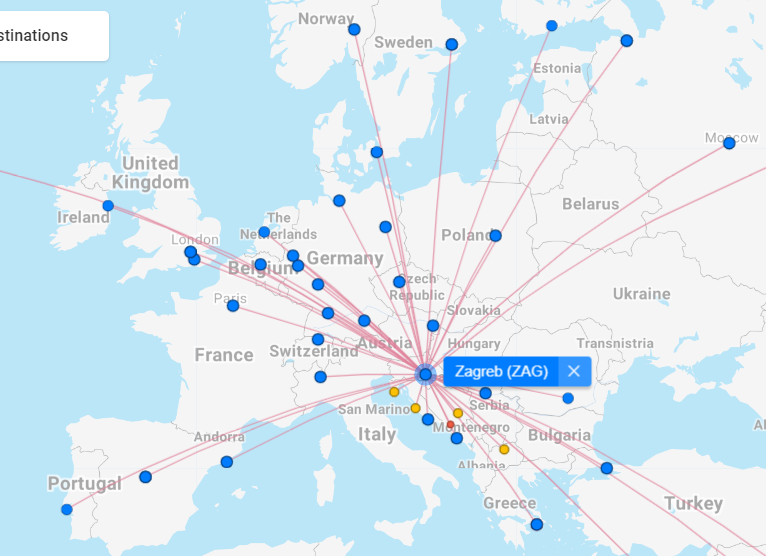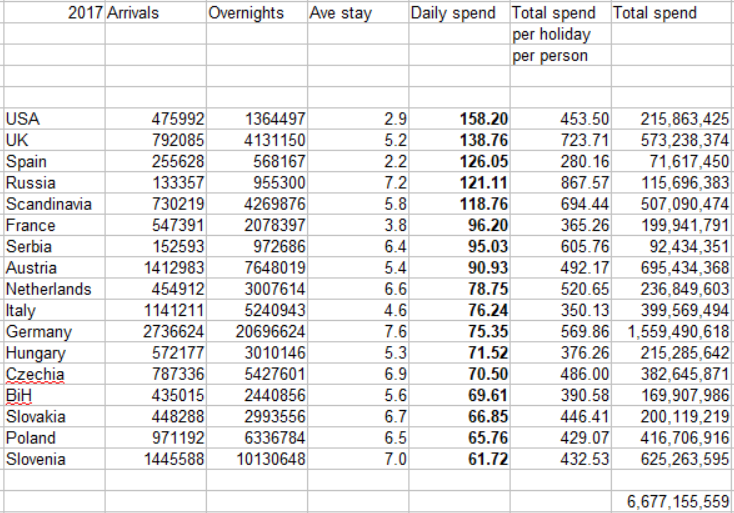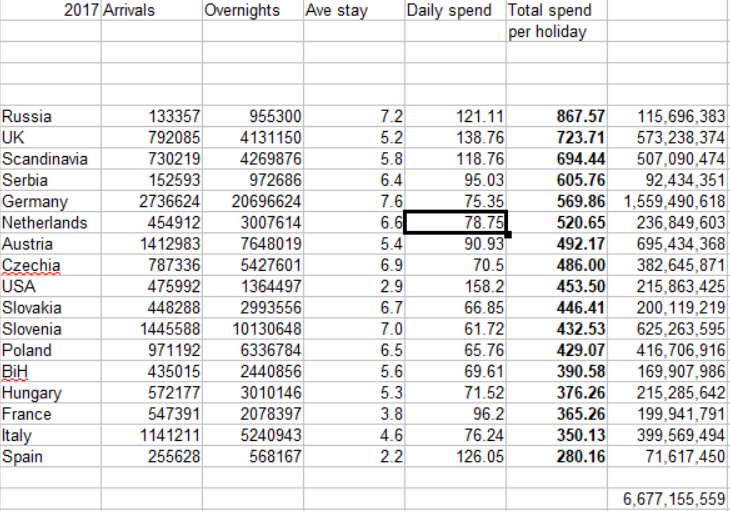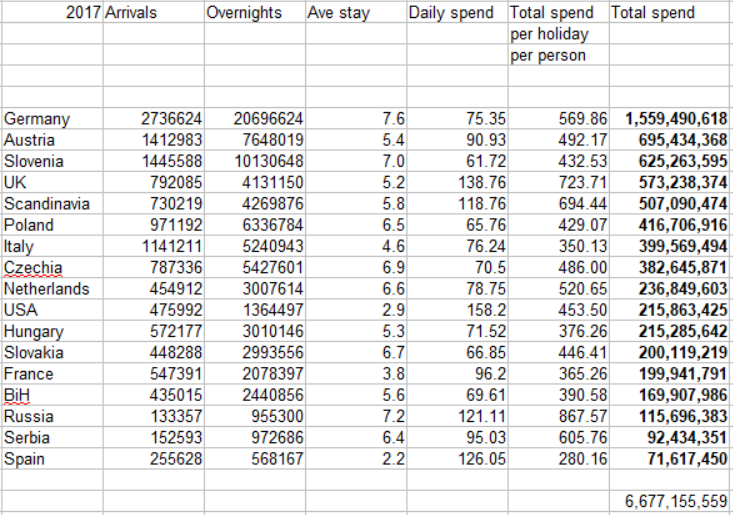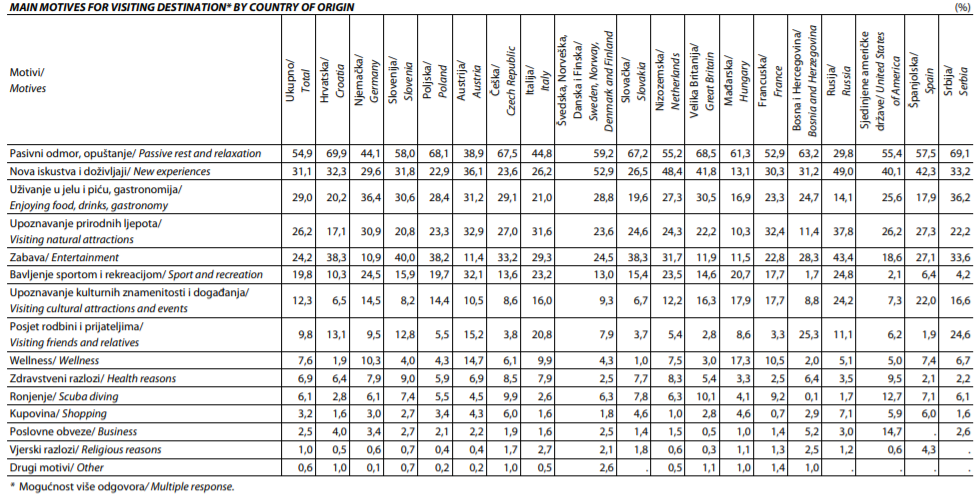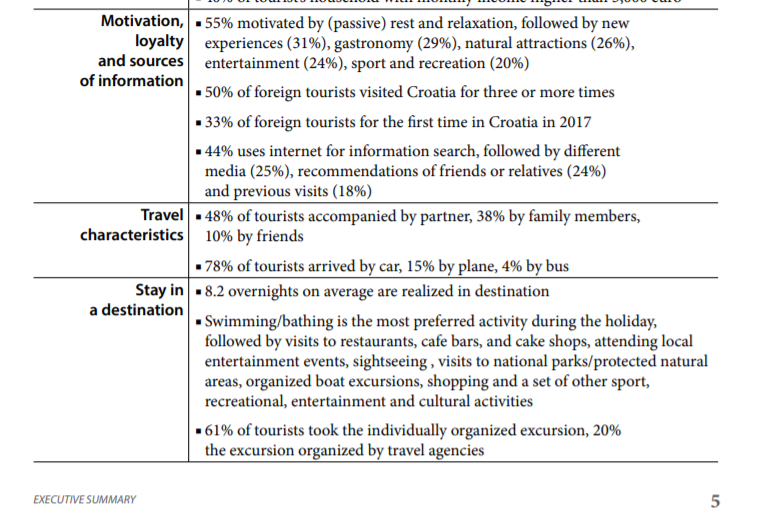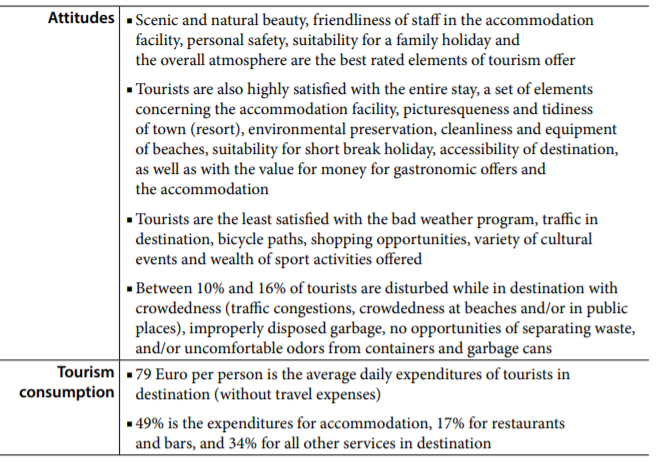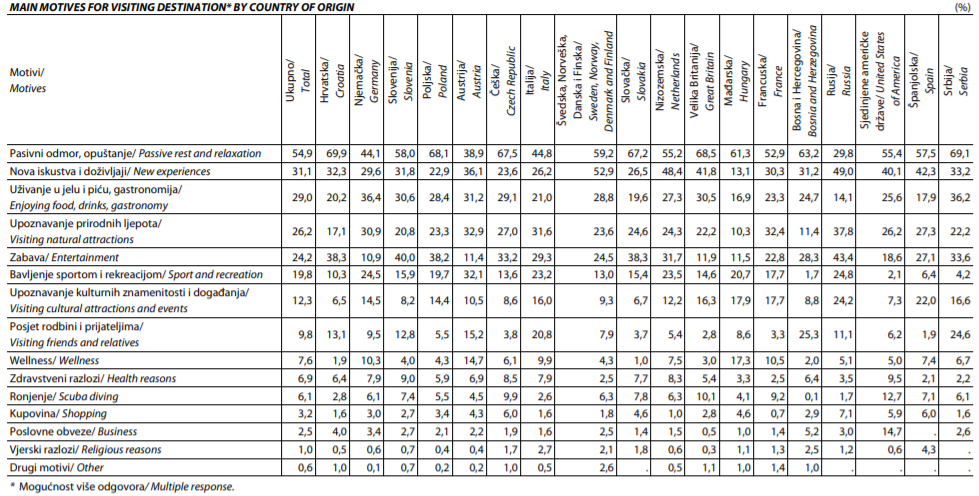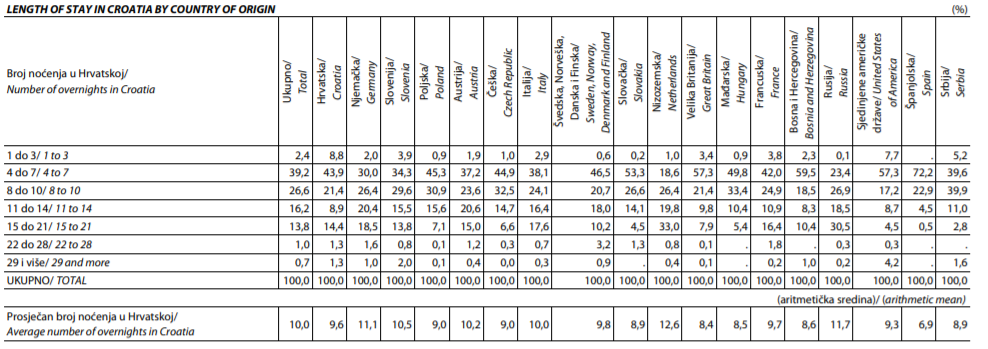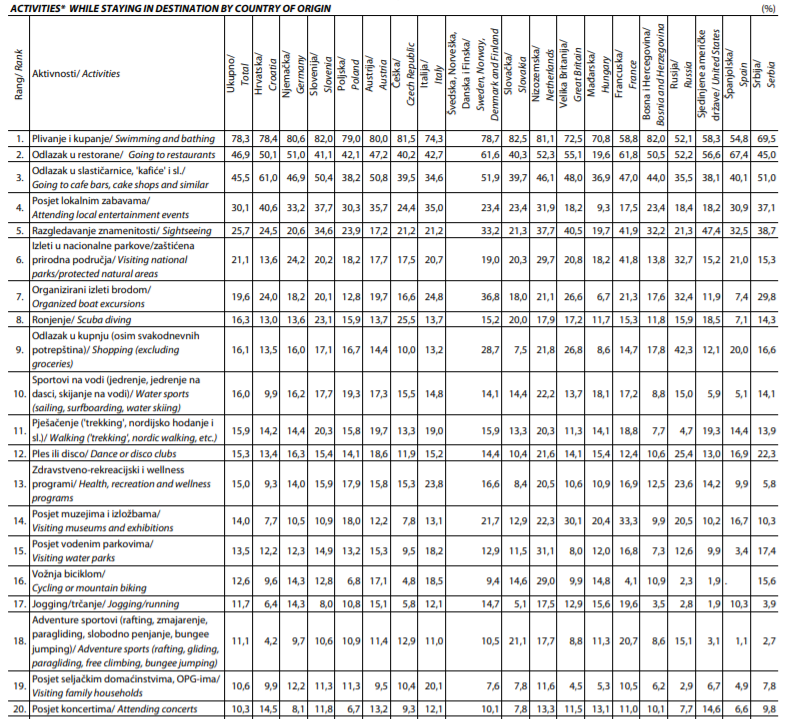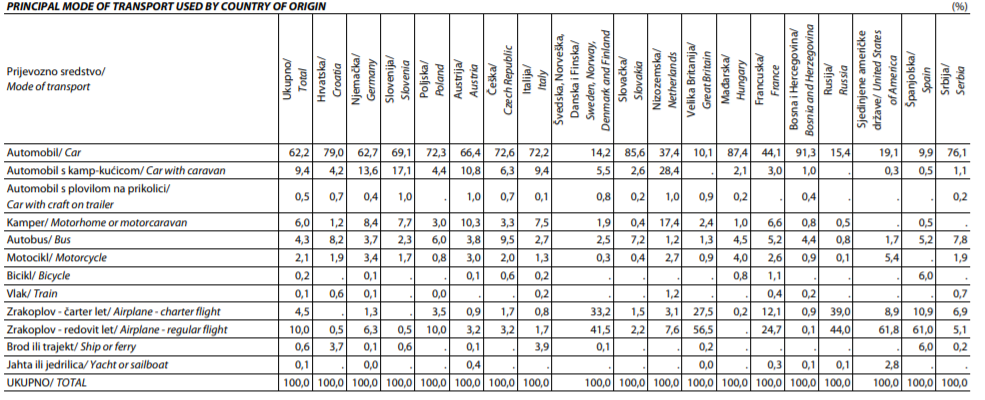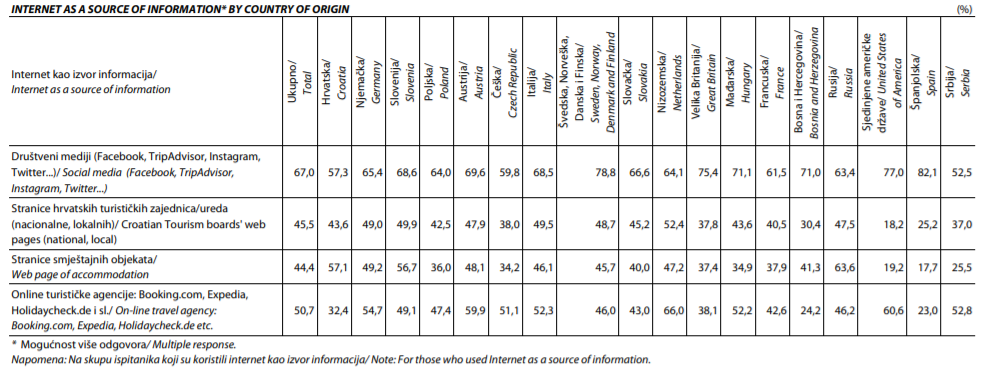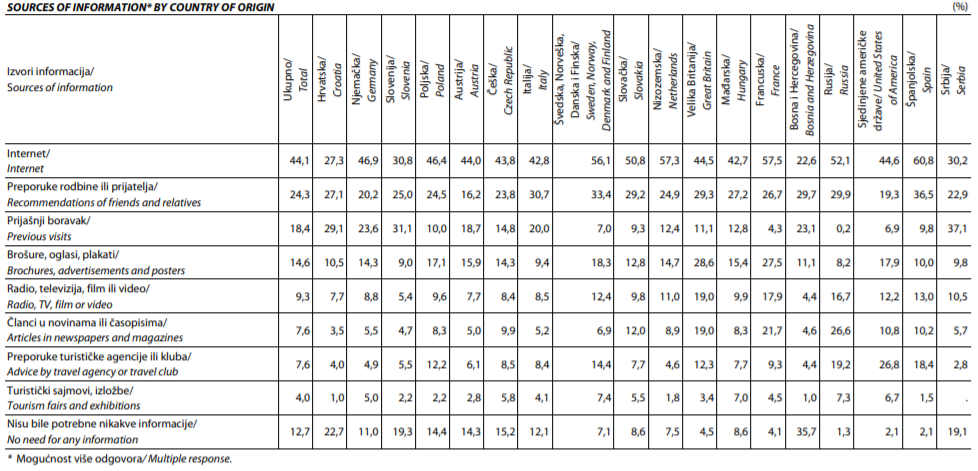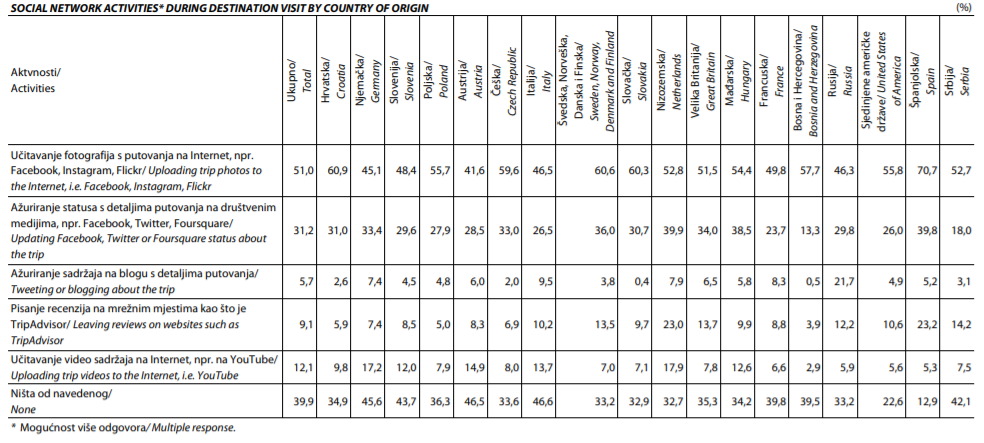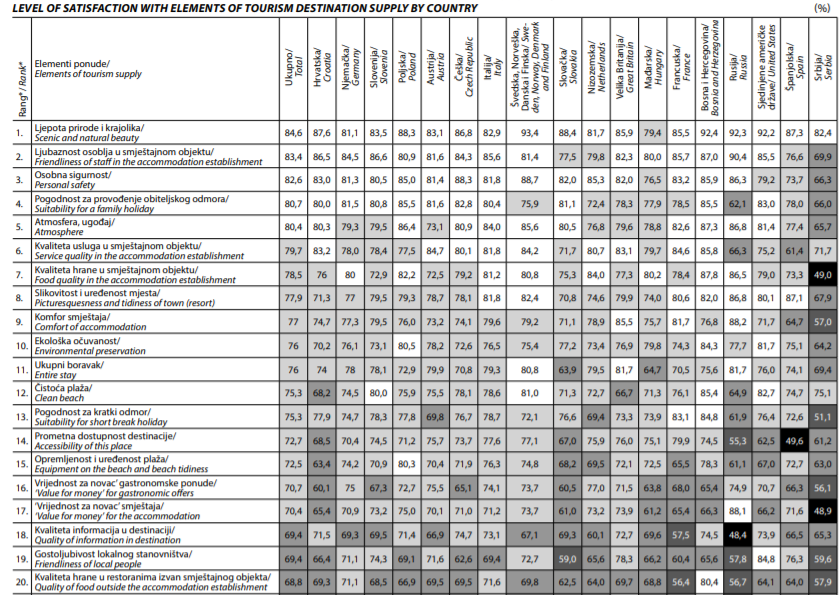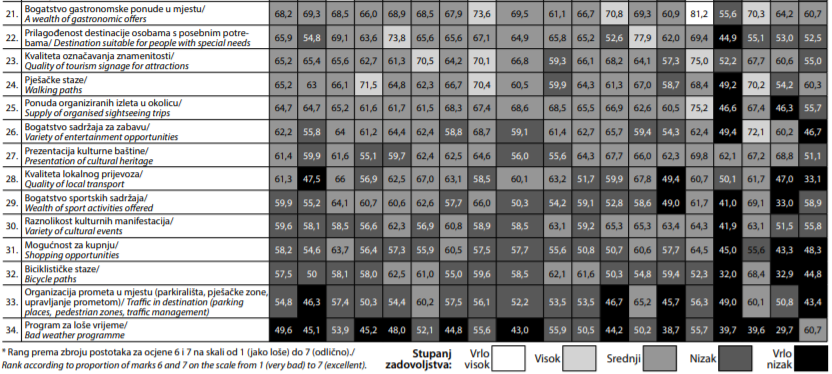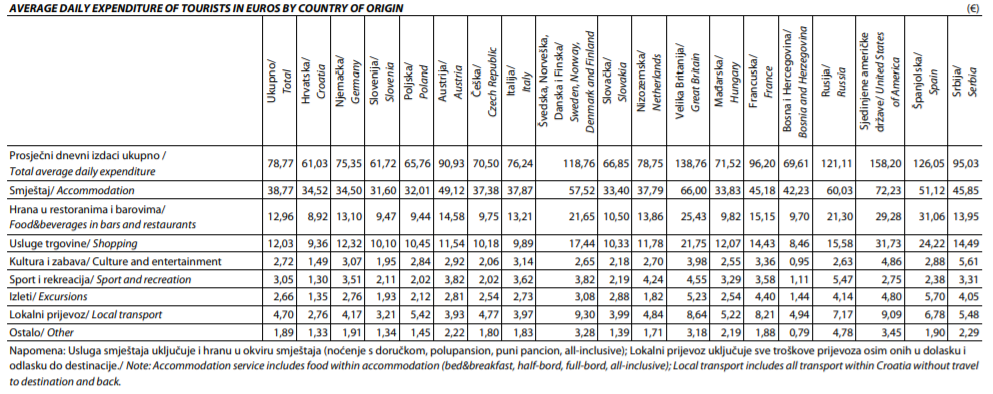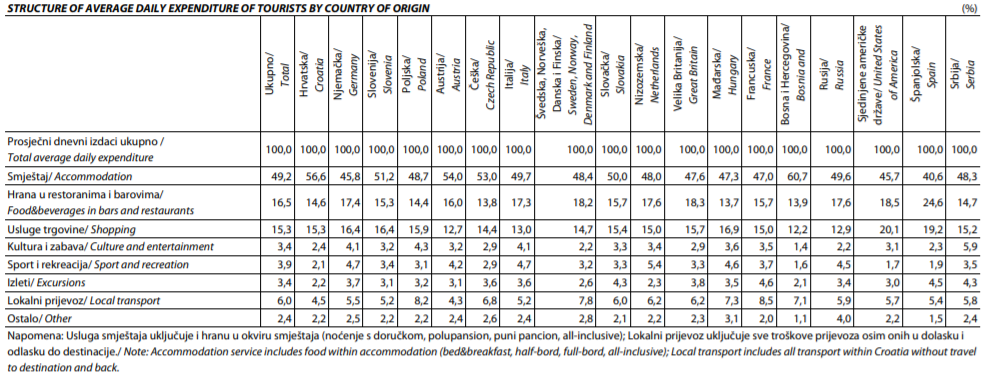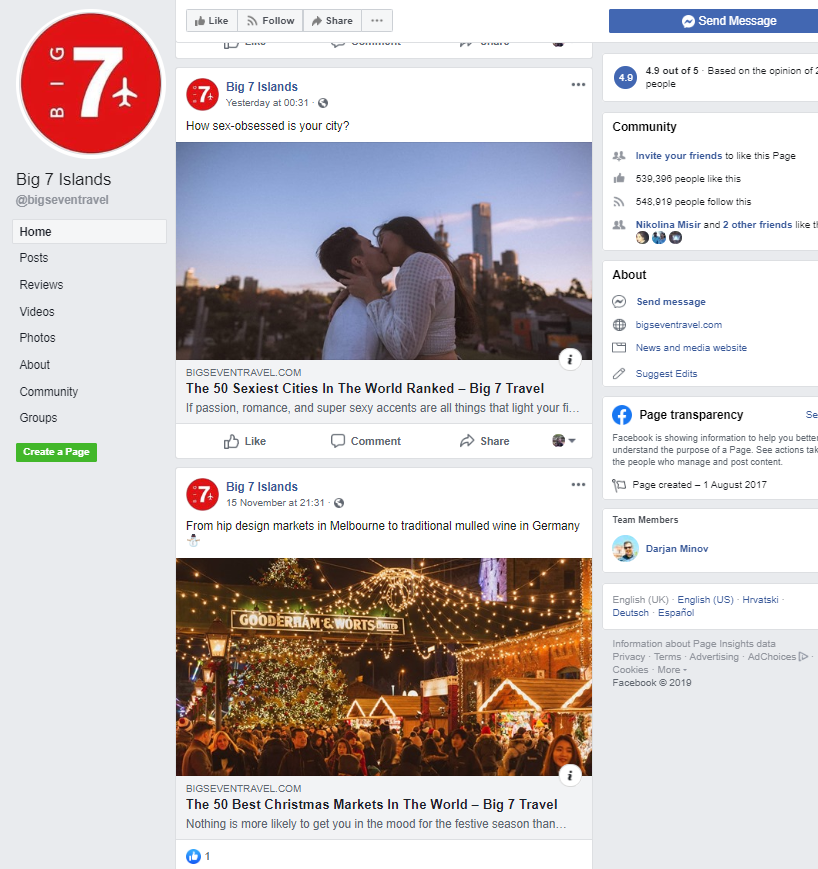Croatian Tourism: 56 New Hotels, Camps and Marinas Categorised in 2019
In 2019, the Croatian Ministry of Tourism categorised ten new campsites with a total of 3,252 camping spaces in them, of which four new campsites are of 4 and 5 star categories, providing an additional, welcome boost for Croatian tourism.
As Poslovni Dnevnik writes on the 19th of January, 2020, during 2019, a total of 56 new hotels, camps and marinas were categorised across the Republic of Croatia. The largest number of new buildings, as many as 30 of them, were categorised as being of a high category, ie, boasting four and five stars.
The Ministry of Tourism, which categorises hospitality and tourist facilities from the groups: hotels, campsites and nautical tourism ports, also categorised 36 hotels, camps and marinas that increased their capacities and/or increased their categories, ie, their number of stars/anchors.
"The Government of the Republic of Croatia has recognised the importance that Croatian tourism holds for further advancement, demographic sustainability and increasing the standard of living in our local communities. That is why, since the beginning of our term of office, we've been placing emphasis on enhancing the quality of the tourist offer and extending activities throughout the year. In the past few years, we have achieved remarkable results in the form of tourist traffic, but more importantly, we're constantly increasing our tourism revenues and attracting more and more investments.
The opening of new hotels, camps and marinas in 2019, most of which are categorised with the highest quality standards of 4 and 5 stars, is proof that we've set up a quality framework for the sustainable development of Croatian tourism, which will give impetus to attracting visitors who have different interests and increasing consumption through most of the tourist year,'' said Croatian Tourism Minister Gary Cappelli.
In 2019, the Ministry of Tourism categorised 43 new hotels boasting 3,948 beds in total, while 26 hotels increased their capacities and/or categories. 26 new hotels were categorised as high-quality four and five star hotels.
Most of the new hotels are categorised in Split-Dalmatia County (13), Primorje-Gorski kotar County (6), the City of Zagreb (6) and Istria County (5). In continental counties, a total of 5 new hotels were categorised in 2019, which is excellent news for Croatian tourism spreading inland too, further away from the coast.
In 2019, the Ministry of Tourism also categorised 10 new campsites with a total of 3,252 camping spaces, of which four are 4 and 5 star category campsites. The largest number of new campsites was categorised in Zadar County (4 campsites with 485 spaces) and Istria County (2 campsites with 280 spaces), and 2 new campsites were opened in continental Croatia in 2019 (in Krapinske Toplice and in beautiful Vrhovine in Lika).
Last year, three new marinas were opened with a total of 774 berths, of which two marinas received the 5 anchors quality category. One new marina was categorised in Primorje-Gorski kotar County (Cres), in Dubrovnik-Neretva County (Dubrovnik) and Istria County (Medulin), while the marina in Rovinj, which boasts 192 berths, increased its quality standard to an impressive 5 anchors.
The positive trend of investing in Croatian tourism is expected to continue throughout 2020, especially due to the plan of passing two laws that will contribute to the improvement of the investment climate.
Make sure to follow our dedicated travel page for much more on Croatian tourism.
Croatia is European Record Holder for Seasonality, Overtaking Greece
Croatia is the only country in all of Europe, and not just the EU, which fails miserably in achieving even 1 percent of its annual tourist traffic during the winter months of January and February.
As Poslovni Dnevnik/Marija Crnjak writes on the 8th of January, 2020, despite years of efforts to extend the tourist season, either with good ideas or simply bizarre schemes, Croatia still has by far the highest seasonality of tourist traffic of all European countries, this also includes non-EU countries.
The just released Eurostat report based on overnight stays in 2018 showed that Croatia has the most pronounced seasonality curve, with as much as 59 percent of total tourist traffic realised in just two months - July and August, which is as much as fifteen percent higher than the next countries on the list - Bulgaria and neighbouring Montenegro.
Croatia is the only country in all of Europe (as a continent, not necessarily as a bloc) that fails to generate even one percent of its annual traffic in January and February, and even Greece, a destination that also has longstanding and enormous seasonality problems, is faring better than Croatia. As is well known, the problem of seasonality has an impact on tourism revenue and pricing policy, as well as on the profitability of investments in tourist facilities, infrastructure and accommodation.
The seasonality in Croatia is mostly influenced by the structure of its accommodation capacities, with by far the largest share of beds in private accommodation (as much as 37 percent of it) and only 10.2 percent of beds in hotels. At the same time, according to the Tourism Impulse publication of the Croatian Tourism Association, the annual average occupancy rate for hotels in 2018 stood at 43.2 percent and family/private accommodation at only 18.9 percent, with these figures slightly decreasing last year.
At the European level, August is the strongest month, with 3.5 times more overnight stays realised than in January. Back in August 2018, Croatia generated almost a third of its annual turnover, as much as 30.2 percent of nearly 90 million overnight stays. In the month with the worst traffic, February, Croatia realised a worrying 55 times less overnight stays than it did in August.
When it comes to Mediterranean countries, which Croatia can be better compared with than with Northern European countries such as the United Kingdom and Norway, who have strong economies that rely on far more than just tourism, behind Montenegro, Bulgaria and Greece come France and Italy with a total of 36 percent of their tourist traffic realised in July and August.
Spain, the southwestern European country which has always been a hit with primarily Northern European tourists, acheives 28 percent of the annual share of its overnight stays in July and August. Malta stands out from the trend of the Mediterranean countries as one of the countries with the most even occupancy rate throughout the year. In addition to Malta come the Czech Republic, Germany, Estonia, Poland, Finland, as well as Kosovo, all of which don't rely that heavily on summer tourism.
Greece recorded a significant eighteen times fewer overnight stays during its worst month, which is also January, than it did during the height of the Greek tourist season - August. The Alpine countries, Austria, Liechtenstein and Switzerland stand out from the rest of Europe, as all of them have two peak seasons, summer and winter.
Make sure to follow our dedicated travel page for more.
Croatia Expecting Boost in Arrivals for Christmas and New Year Holidays
December 17, 2019 - Croatia should see a 4 percent increase in tourist traffic over the upcoming holidays compared to last year.
According to a survey conducted by the Croatian National Tourist Board in conjunction with the system of tourist boards, during the Christmas and New Year holidays, that is, from December 20, 2019, to January 6, 2020, around 227,000 arrivals and 594,000 are expected across the whole of Croatia, which represents an estimated 4 percent increase in tourist traffic compared to the same period last year, the Croatian National Tourist Board (HTZ) said.
“Croatian and foreign tourists are increasingly recognizing and praising the quality offer of Croatian destinations in the winter, both on the continent and on the coast, but also on the islands. This is precisely the right direction in trying to position Croatia as a destination with an attractive and diverse offer throughout the year, i.e., an evener distribution of tourist traffic throughout the year,” said the director of the Croatian National Tourist Board, Kristjan Staničić.
Looking at the announcements of tourist traffic in the counties along the Adriatic, the coast during the Christmas and New Year holidays expects about 126,000 arrivals and 383,000 overnights, which is an increase in traffic of about 2 percent, while the continent expects around 100,000 arrivals and 211,000 overnights, which represents tourist growth of about 6 percent.
The most significant tourist traffic on the coast is expected in Istria, Primorje-Gorski Kotar, Split-Dalmatia and Dubrovnik-Neretva counties, while in continental Croatia, the highest tourist traffic is expected in the city of Zagreb, and Krapina-Zagorje, Međimurje and Karlovac counties, according to the Croatian National Tourist Board.
Recall, Zagreb Advent will run until January 7, 2020, while those on the coast, like Advent in Split, will only run until January 2, 2020.
To read more about travel in Croatia, follow TCN’s dedicated page.
New Istria300 Cycling Race to Bring 1,000 Professional and Recreational Cyclists to Istria
December 5, 2019 - With the start and finish line in Porec, a new cycling event titled Istria300 will launch in October next year, which will bring as many as 1,000 professional and recreational cyclists to Istria, announced the Valamar Diamant Hotel.
Glas Istre writes that the specialty, and therefore the uniqueness of this cycling event, is behind its motto ”Ride your limits". Specifically, participants will be able to choose their desired distance from the three offered during the ride. Istria300 will ride on trails of 155, 235, and 300 kilometers maximum.
In addition to the race, as part of the event, the Istria300 Expo will be held in Porec from October 8th to October 11th, offering visitors and participants a handful of innovations from the cycling industry. In addition to sports facilities, many interesting lectures by renowned cycling coaches and nutritionists from World Tour cycling teams will be organized.
This international cycling event is organized by Vladimir Miholjevic, former Croatian cyclist and Julius Rupitsch, organizer of the prestigious Großglockner Berglauf mountain race in Austria.
“We chose Istria because it offers ideal cycling conditions. The routes include beautiful places, excellent infrastructure, as well as facilities for cyclists. In addition, the destination itself is made up of its people, and the overall impression will provide participants an unforgettable cycling experience,” said race director Vladimir Miholjevic, adding that Istria is rich in natural beauty, and even these routes do not cover everything, which leaves room for new plans. He also points out that there are not many places in the world where 300 kilometers can be driven on closed roads.
The organizers have set themselves the highest standards in organizing cycling events, and their desire is for athletes and cycling to profit as much as possible.
The mayor of the host city, Loris Persuric, said that he believed that October next year would be a truly active month as another motive for arrivals was created, thus prolonging the tourist season.
The director of the Tourist Board of Porec, Nenad Velenik, agreed, adding that Porec certainly wants to become a base for different profiles of athletes and various sports, such as handball, football, and cycling.
Valamar Riviera and its Istrian destinations Porec and Rabac are actively involved in the development of cycling tourism.
“We believe that the main levers for the development of bike tourism are content creation and offers for cycling tourists. The terrain configuration in Istria, the excellent infrastructure and facilities of our hotels, adapted to active guests and professional athletes, are the basis for the development of a great cycling tourism offer. At Valamar Riviera, we strategically develop the destinations where we do business using our resources and their full potential to offer our guests exactly what they are looking for,” said Davor Brenko, Vice President of Sales and Marketing at Valamar Riviera, who supports this major project.
Brenko adds that the fully equipped bike center currently in Rabac is planned to open in Porec next year. Furthermore, the official partner of this event is the world-famous Israel Cycling Academy cycling team from Tel Aviv, which has as many as 29 wins this year, and is specific in that it brings together members of different nationalities.
"You have a great track configuration, beautiful sea, and a great climate, which is why we are a proud partner of the event. But we are especially looking forward to our stay in Istria and the excellent treatment at Valamar Diamant Hotel as a base for our training camp in Israel, given the beautiful destination, excellent service and organizational references we have seen in four appearances at the Tour of Croatia and this year's CRO Race,” said Kjell Carlström, Israel Cycling Academy team director.
To read more about sport in Croatia, follow TCN’s dedicated page.
Kings Landing? NY Times Highlights Croatia as Kings of Accidental Tourism
November 27, 2019 - Accidental tourism often seems to be the main strategy of Croatia's tourism chiefs, as the New York Times unwittingly pinpoints in a recent feature article.
I had about 10 messages from friends and readers yesterday, all sending me a link from the New York Times website. It was an article called How to Rebrand a Country, which those who contacted me said had echoes from my recent writings, especially Lessons from Rwanda: Promoting Tourism Through Football, African-Style.
While it is flattering to think that a media giant such as the New York Times might read a small little portal like ours or be inspired by something found therein, the article got my attention for a very different reason - a striking example of the Kingdom of Accidental Tourism at its finest.
How to Rebrand a Country - Colombia, Rwanda and Croatia were seen as dangerous and conflict-ridden. Now they top travel bucket lists. How other countries can follow their lead, in seven steps.
An interesting topic, and one which was of great interest to me personally. I have always had a soft spot for Rwanda after my time as an aid worker there after the 1994 genocide. It has been nothing short of astounding following the pace of change there in the 25 years since it lost 11% of its entire population to genocide in just 100 days. Now one of the top luxury tourism destinations on the planet, Rwanda even launched its own satellite earlier this year. Rwanda's story and path since the conflict has been very different, but one I have been cheering for from the sidelines.
Of the seven steps the Times highlighted, 4 involved only Colombia and Rwanda, as Croatia presumably had nothing to contribute, while the last step was dedicated to Croatia at its absolute accidental tourism best. The four that did not include Croatia, but did include creativity, were
1. You can't run from the past. 2. But you might be able to use it in a catchy marketing campaign. 3. Find a symbol. 4. Don't forget the influencers.
We will save the step where Croatia was unique for later.
There were two other steps where Croatia featured with one or both other counties.
Keep up the marketing campaign
"Ahead of the 2018 World Cup, Croatia’s tourism board created a video that took viewers across the country, through the eyes of its national team’s most popular soccer players. AFTER the players emerged as stars of the Cup, the video made rounds on social media."
The AFTER is highlighted by me, not the original article. The message being that the video was only a hit due to the success of the national team in Russia, so an accidental tourism bonus.
The video itself is excellent, as is the concept (you can learn more about its making from Luka Dubokovic of BBDO, the agency behind it). Luka kindly agreed to the interview earlier this year, payback for me picking his family grapes during the harvest of 2003 in Zavala...
The video was made many months before the World Cup. Had the team and the fans not exceeded expectations and won the hearts of millions, would there have been such an impact? The advice to keep up the marketing campaign is good, however.
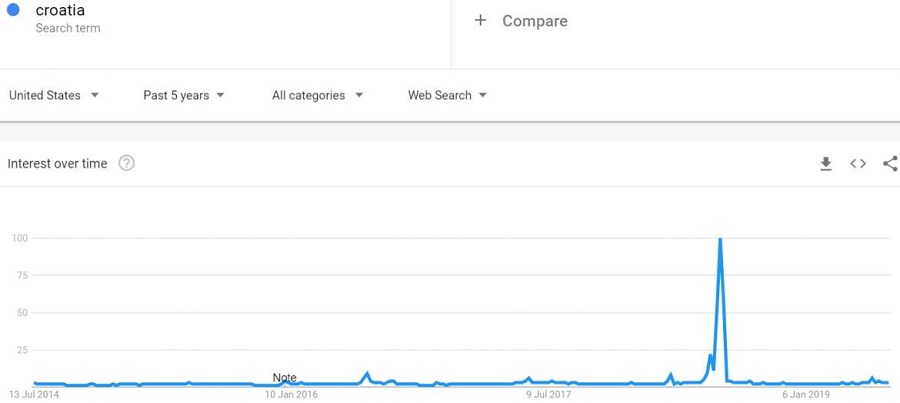
Which is why it was such a disappointment that yet another great opportunity was missed. Google Trends records just how Croatia took advantage of the football gift - you can read more about it in Remember the World Cup? Google Trends on How Croatia Took Full Advantage (Not).
Meanwhile, Rwanda - another country featured in the article, and one which has not only never been to the World Cup, but has also never had a player in the Premier League - registered a coup with a sponsorship deal with Arsenal. A deal which makes Rwanda the first tourism partner of a Premier League club, which will see the Visit Rwanda logo seen on Arsenal shirts around the world some 35 million times a day.
Bring in the planes
“We had to improve a lot of the flight connections,” Mr. Stanicic said. “We now have flight connections with main European hubs like Frankfurt, Amsterdam, Munich, London.”
I actually laughed out loud at this, especially the mention of the first direct flight from the USA to Dubrovnik earlier this year after 28 years.
Meanwhile, in the region...
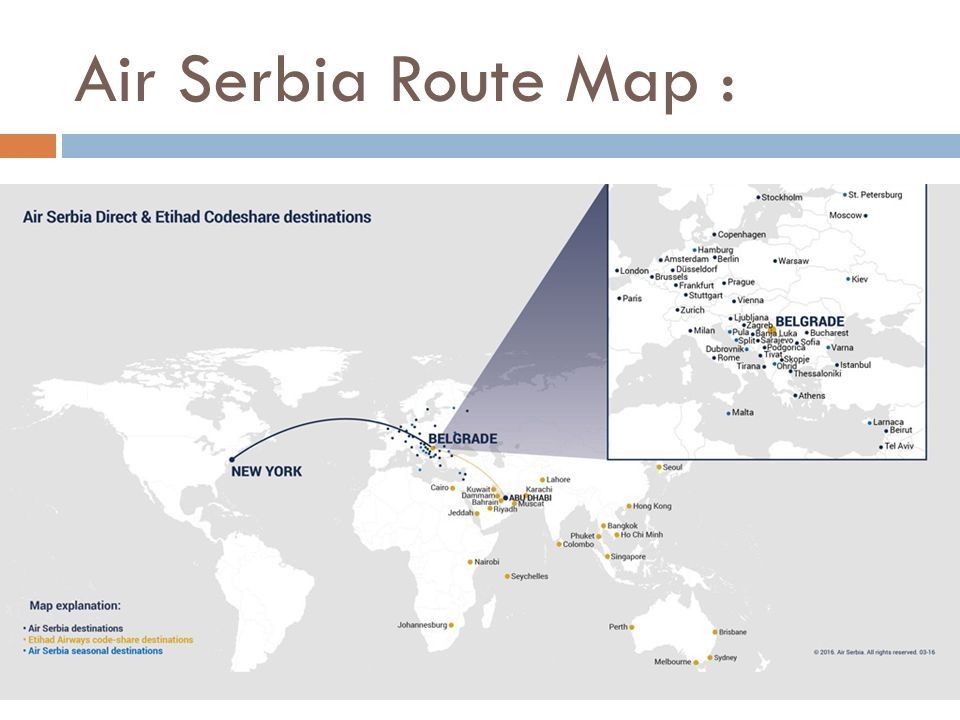
Air Serbia has direct year-round flights to New York, as well as a host of other destinations, and its partnership with Etihad takes its reach as far as Perth, Melbourne and Sydney.
Since the collapse of Malev in 2012, Budapest has gone from strength to strength, the busiest and most accessible airport in the region. How did they do it? A very revealing interview from Budapest Airport CEO Jost Lammers with TCN earlier this year.
Meanwhile in Croatia...
Despite its shiny 330 million euro new terminal, Zagreb currently has less flights a day than Palermo, Hanover or Aberdeen.
Despite Croatia taking over the EU presidency in January, Croatia Airlines will connect with just seven EU capital cities. Key capitals such as Rome have no connection whatsoever, one of 11 EU capitals not directly connected to Zagreb. Simply Flying recently published an article on the farce that is Zagreb Airport.
And while it is true that there has been a huge increase of flights to coastal airports, the fact remains that Croatia is ignoring completely one more huge gift, and one which caters to an increasing number of arrivals.
About 80% of tourists arrive by car. By 2030, there will be an estimated 21 million electric cars on the roads of Europe. But there is only one birthplace of Nikola Tesla, in Smiljan. The tourist potential of developing this into an educative temple, with a dedicated offering that Barcelona's Nou Camp or Manchester United's Old Trafford does for football, is enticing indeed. But that would not be accidental tourism, that would need a strategy and some thought.
Get lucky
All is not lost, however, for the New York Times concludes with its seventh and final step, a step which is reserved exclusively for Croatia.
Get lucky.
Yes, Get lucky, the main strategy of accidental tourism, and one which Croatia excels in. Be it World Cup success, the birthplace of Tesla, the gushing 'world-class food, wine and cheese' from Anthony Bourdain, the digital nomad revolution, or Game of Thrones itself, the gifts just keep on giving. No need, therefore, when the whole world is branding itself in partnership for the launch of Series 8 of Game of Thrones in April that the Croatian National Tourist Board could not even muster a post on Facebook.

Such things are not necessary in the Kingdom of Accidental Tourism if others keep coming bearing gifts like Game of Thrones, and if the national football team is playing well.
Russia, UK, Scandinavia, Serbia Biggest Croatian Tourism Spenders
November 23, 2019 - Who are the biggest Croatian tourism spenders? The answers might surprise you. An analysis based on official numbers and an official survey.
Numbers, numbers, numbers - the only currency which seems to matter with Croatia's official tourism strategy.
20 million tourists this year, 100 million overnights, more than 800,000 private accommodation beds for rent (up 100% on 2010) - the Numbers God is receiving sufficient numeric libations at the Temple of Numbers.
We mere mortals are usually fed only the numbers we need to be told - basically how well it is going. When the Adriatic speaks after a strong Jugo storm, washing up Albanian but also Croatian trash, one wonders at the environmental numbers, cost and devastation. But only for a moment, for that would take us off message from the celebrations at the Temple of Numbers.
Not being part of the system, and not really knowing my around the system, I have always struggled to find the latest available reports and statistics. Earlier today, I did what was - for me - a reasonably interesting article on the last in-depth Croatian tourism survey that I am aware of, which had some rather interesting and surprising conclusions.
The data, based on tourist surveys from 20 key markets (please note that Scandinavia was lumped into one and includes Norway, Denmark, Sweden and - incorrectly - Finland, not my doing) on everything from reasons for choosing Croatia and activities undertaken to length of stay and average spend. Some really useful information from the summer of 2017. The survey is only conducted every three years apparently, so this is the latest one.
It got me thinking. If we had data on average spend and length of stay per country, then we cross-referenced them with the official statistics, what could we learn? Quite a lot, and once more the results were extremely surprising. For consistency, I used 2017 official statistics, the same year as the survey. The numbers below are my extrapolation of the survey findings blended with the official statistics.
According to the survey, the biggest daily spenders per day were from the USA, more than twice what the Germans spent. Only the UK, Spain, Russia and that Scandinavia averaged over 100 euro a day. And it was a surprise to see Serbia in seventh, completely outspending the Germans and most of the rest of Western Europe.
I then matched up the daily spend per country with the average length of stay. A big surprise - the Russians spend the most money on holiday in Croatia, UK, Scandinavia, with Serbia in fourth.
When it comes to total spend, however, a combination of number of visitors, length of stay and average daily spend, nobody comes close to the Germans. Despite their relatively low daily spend, they drop almost three times as many euro overall as their closest rival, Austria.
Now look in the column of the daily spend, above. If we can get more Americans, Russians and Spaniards, the revenues are going to increase with less tourists. This is already happening with the important USA market, and from memory, there are about 720,000 tourists from the USA this year, a 50% increase on these 2017 numbers. In the case of Spain, an increase in visitors and length of stay would do wonders.
But the biggest lesson, perhaps, was this detailed look at the motivations for travel to Croatia. If we look at the Russians, they are the LEAST interested in the most popular activity, Passive Rest and Relaxation (aka beach tourism), the MOST interested in new experiences, sport and recreation, visiting natural attractions, entertainment, and visiting cultural attractions and events.
Talk about a dream client! Not interested in the one thing which is the biggest pressure point in Croatian tournament, but keen to explore all the other options we have in abundance.
I am not advocating we make Russia our number one market focus (although I do wince about that lost opportunity with the World Cup reading these stats...), but the point is that there is high-spending interest in Croatian tourism away from the pressure points. And the more high-spending tourists doing different activities all over the countries, the less the reliance on endangering the Adriatic jewel.
I am sure our tourism chiefs have all this under control.
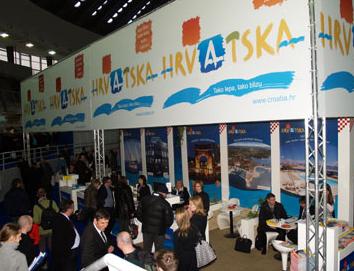
(Croatia was the official partner country of the Belgrade Tourism Fair in 2011 - Photo credit Croatian Ministry of Tourism)
A word on Serbia and its relationship with Croatian tourism. Having lived here for 17 years and having just come back from the Vukovar Remembrance Day parade (you can read the impressions of a foreign resident of this most intense and emotional day here). I am fully aware of the various Croatian feelings towards tourists from Serbia. The official messages are very conflicting. Currently, the Croatian National Tourist Board informed me that Serbia is no longer a target market for Croatia.
As recently as 2011, it was very much so, for as you can see from the Croatian stand at the 2011 Belgrade Tourism Fair, Croatia was the official partner country.
Under an article entitled, Croats Helping Serbian Tourism, and Serbs Croats, here is the official Croatian position on a tourism market seemingly completely abandoned today:
The International Tourism Fair (ITTFA) held in Belgrade, in which Croatia participates as a partner country, was opened today in the Serbian capital, and by February 27th, on 32,000 square meters [of space], around 900 exhibitors from 43 countries will be present.
At the 33rd Belgrade Tourism Fair, Croatia will be specially presented as a tourist destination. The State Secretary of the Croatian Ministry of Tourism, Ivo Mujo, stated that Croatia's arrival [presentation] in Belgrade, after accepting the invitation to become a partner country of the Belgrade Fair this year, was a new dimension of cooperation.
Serbian guests are important to us in Croatia, but this isn't a one-way process because more and more Croatian tourists are going to Serbia - said Mujo at the opening of this fair. He stressed that he believes that this year's presentation of Croatia in Belgrade will bring Croatia and Serbia closer in the tourist(ic) sense.
The 2011 Belgrade Tourism Fair, with Croatia as the main sponsor, took place 26 years after the end of the war. The 2018 edition did not have a single Croatian exhibitor.
Just like I am not advocating that we make Russia the top target market, nor am I saying we should focus on Serbia - it is not my country. But I think it is worth bearing in mind - perhaps - that the Serbs who do come under the current climate spend more than almost anyone, and almost a quarter of them have visited 6 times or more, according to the survey. Finding a new generation of loyal, high-spending tourists who would come more than once should not be as challenging as other markets.
If anyone has access to any other such surveys, I would be interested to read them. Please contact me at This email address is being protected from spambots. You need JavaScript enabled to view it.
Croatian Tourism Survey: Who Spends, Expectations and Satisfaction
November 23, 2019 - What are the attitudes and expenditures of tourists in Croatia, and who is spending the most? Some useful insights from a major Croatian tourism survey by TOMAS and the Institute for Tourism.
One of the joys of being an independent writer outside of the system is that you have little easy access to available official information. Yes, there are reports and surveys out there, but not that many are online or publicly available, and so finding data to back up your arguments is an ongoing process.
I had not come across this Croatian tourism survey before, for example. The TOMAS 2017 Attitudes and Expenditures of Tourists in Croatia survey by the Institute of Tourism may be two years old, but it still has plenty of rather interesting data to work with. The report is actually quite current, as this Croatian tourism survey only comes out every three years, with the next one due out in 2020.
The results of the survey were compiled from interviews with 5,950 tourists in hotels, campsites and private accommodation in 67 destinations on the coast and islands between July and October 2017. Respondents came from 20 key Croatian tourism markets. While this survey covered just the coast, the 2020 one will apparently cover the entire country for the first time.
Rather than reinvent the wheel, here are some of the key findings from the executive summary.
The full report is available in Croatian and goes into quite interesting detail on a number of issues by tourism market. It shows how attitudes, experiences and expenditures vary considerably between those countries. I hope the tables will be readable - there is nothing I can do to make them bigger if not - apologies.
Not surprisingly, the main reason for coming to Croatia on holiday was for rest and relaxation, with Serbs (69%) citing passive rest and relaxation as the main reason, the largest percentage, much more than the Russians at just over 29%.
49% of Russians come for new experiences, however, slightly behind those adventurous Scandinavians, and way ahead of the Hungarians at 13% - they clearly have found what they want and like it.
Interestingly, for a destination so proud of its food and wine, only Serbia (36%) and Austria (31%) cited gastronomy as a key reason. Something for our tourism chiefs to reflect on, perhaps?
Neighbouring Slovenia attributes 40% of its overnight stays to wellness tourism, and yet only Germany and France at 10% made double figures for wellness tourism, while none did for health tourism. This is a HUGE, year-round growth potential for Croatia, and as I reported from Crikvenica recently, it seems that things are finally started to move, albeit slowly.
Another growth potential with better marketing and organisation is religious tourism. While Medjugorje in neighbouring Bosnia and Hercegovina brings more than 1 million tourists a year, the largest level of religious tourism interest is from Spain at just 4.3&%. And unlike Medjugorje, Croatia has an authentic miracle town, fully endorsed by the Vatican.
The era of the travel agent seems to be coming to an end with the rise of self-organised trips and excursions, with only Russians using tours from travel agencies in any large quantity these days.
How long do people stay? The Dutch and the Russians are the only ones who come in large numbers for more than 2 weeks (over 30%), while 72% of Spanish visitors stay for less than a week.
What do tourists like to do when they come to Croatia? Sun, sea, eat, repeat. And not much else tops 40%. One-dimensional tourism, but one which is slowly evolving.
While all those new flight announcements and record passenger numbers show growth in tourists arriving by air, the majority of tourists still arrive by car. And with 21 million electric cars on European roads by 2030, imagine the potential if we could build up Nikola Tesla's birthplace in Smiljan to a must-visit temple for electric vehicle drivers, in the way that Old Trafford or the Nou Camp celebrate their brands in football.
The era of the low-cost carrier has arrived - on the coast at least, if not in Zagreb. Yet.
Three of the most interesting markets for me - Scandinavia, the United States and Spain, scored the highest in terms of social media as a source of information.
A healthy percentage of people coming because of personal recommendation, but can we finally kill the cult of the printed brochure, please?
Some interesting findings on customer loyalty (and one must bear in mind that some markets are more mature than others). The most loyal, with almost a quarter of visitors having been 6 times or more, are Bosnia, Serbia and Slovenia. By contrast, the highest percentage of first-time visitors came from Russia (94%), Scandinavia, France and Spain.
Uploading photos during the trip was most popular among the Spanish, and perhaps these stats represent a clever marketing plan. With the notable exception of Russia (21%) no country topped 10% for tweeting or blogging about their trip. A campaign to encourage this perhaps, something like a free trip for the best tweet/blog?
A really useful breakdown of how each market rated a range of experiences, the highlights of which are summarised in the executive summary at the beginning of the article.
Time for the big one - who is spending the money? There were a few surprises in this one for me, both in the high spenders and the lower spenders (average daily spend is 79 euro). USA the clear winner (158 euro per day), followed by UK, Spain, Russia and Scandinavia, the only countries spending over 100 euro a day. France and Serbia spend 96 and 95 respectively. At the other end, those Central Europeans with their cars full of supplies were below 70 euro a day, which Germany was much lower than I expected (75 euro), a full 15 euro less than Austria. I assume that the reason is linked to so many camping.
And those Spanish love to eat, easily the highest spenders on restaurants and bars, both in terms of actual euros and percentage of spend.
And one final and important finding for this article (there are many more in the full report) - feedback on the expenditures of their stay in Croatia. While all but one country reported more than half finding expenditures in line with expectations, in all cases a significantly larger proportion thought the costs were higher than expected than lower than expected.
Lots to take home and think about, positives and negatives - all of which can be turned to positives if we learn from the negatives and put them right.
To learn more about the work of the Institute for Tourism, visit the official website.
For the latest on Croatian tourism, follow the dedicated TCN travel section.
Lists, Lists, Pointless Lists: Does Clickbait Make You Travel?
November 17, 2019 - The Internet is full of pointless lists, but do they make you travel to a destination?
If I ran the Internet, there would be two things I would do immediately.
I would ban comments, at least until and unless someone had actually read the article. No, I would ban comments entirely. The 1% of intelligent and engaging comment gets drowned out by our keyboard warriors, so the online world would be a better place without comments.
And I would ban pointless lists, especially pointless clickbait travel lists.
I mean, has anyone actually travelled to a destination because they saw it on a clickbait list? Like, ever?
My relationship with travel lists is admittedly evolving. Having started my online writing career at the tender age of 41, I used to think lists were the greatest thing ever for someone writing about tourism. When Albania was voted Lonely Planet's Number One place to go in 2011, I could write with authority about it when few could, and when Lonely Planet gave its destination top spot love to Hvar in 2012, I was in heaven.
But then...
30 Must-See Places Before You Die, Top 10 Romantic Towns in Europe, 27 Unknown Jewels of Croatia, Top 10 Honeymoon Destinations in Europe, Top 10 Places in Europe to Bring Your Pet Giraffe, the lists went on. And the more the lists peppered my inbox with their unending lists which always had some kind of Croatian angle, the more I found myself asking the same question:
According to whom? On what authoritiy?
There are some well-established lists in the travel industry - Lonely Planet's Top 10 series each October; the New York Times 52 Places to See in 2019, the Conde Nast Annual Traveller Awards are three examples. There are certain lists which are based on detailed research, such as Business Insider's list of the top 15 countries billionaires will visit in 2019.
And then there is an enormous list of total and utter pointless clickbait crap. An ENORMOUS list.
The cleverest of these is the European Best Destinations website, which is a website which descended on Croatia in a blaze of publicity in 2016 from memory. Zagreb was voted Best Advent Destination in Europe, Zadar the very Best Destination in Europe.
Really?
I remember at the time that the Croatian media, while encouraging people to vote, vote, vote, were a little incredulous that Zagreb could be shortlisted as best Advent market in Europe. Full credit to the Zagreb Tourist Board, they built on this gift and have added lots of content. So much so that perhaps today it can be considered as one of the best in Europe.
But Zadar as best destination?
The European Best Destinations project was very clever, choosing one destination per European country and encouraging everyone to vote. Croatians are very patriotic, and online they love to celebrate victory and being the best at things. If one (actually more than one was allowed per person) click could help Croatia become the best at something, they would click away. And so Croatia had the best destination in Europe. A quick look at the EBD website explained things a little more:
European Best Destinations is a European organisation based in Brussels and developed to promote culture and tourism in Europe. In partnership with the participating tourism offices and the EDEN Network we promote a better understanding of the wealth, diversity and quality of European destinations.
So participating tourist boards - just one per country per list - pay to take part in the project, then the general public is encouraged to be patriotic and vote for the destination in a country. And so a new Best Destination is born.
And then there are lists such as the one which hit my inbox a few days ago before I asked to be removed from the mailing list - a travel website called Big Seven Travel. They had come up with a list of the top 50 Christmas markets in the world for 2019, with the big science of their research concluding that Zagreb was the third-best in the world, behind Birmingham of all places, and somewhere in the States.
According to the press release, This year's top Christmas Markets were ranked on a number of factors, including but not limited to vendor variety, entertainment, local traditions, reader suggestions from our 1.5 million social audience and previous awards.
The only time I had ever come across this website was from similar previous press releases and pointless lists, so I decided to have a look at their impressive social media reach.
They do indeed have very impressive numbers - over 530,000 Facebook fans. A little odd, then, that this fantastic list of the top 50 Christmas markets in the world got just one like from that massive following of half a million followers. Even stranger, perhaps, that such a clickbait title of the 50 Sexiest Cities in the World got no likes at all. Indeed, have a scroll down, and if you find a post with more than one Facebook like, you are a better man than me. A little strange given that reader suggestions are one of the main factors in compiling the list. Allegedly.
But the team have been busy thoroughly researching their lists. In the last few days alone, and in addition to their thoroughly researched lists of the world's top 50 Christmas markets and sexiest cities, they have managed to research and rank the 50 friendliest cities in the world, the top 25 winter getaways, the best 50 cocktails in the world, the best 50 burgers in Europe, 21 pizzas you have to eat in New York before you did, and much, much more.
But with almost none of their half a million fans clicking, how do they get the clicks?
A simple technique which works very well.
Simply contact the media in each of the countries you have decided to list and send a press release. An easy copy paste text and photo, one easy story done. Clickbait and share guaranteed. Their readers will be delighted and will share with their friends. And so more pointlessness spreads around the Internet.
And does it actually make anyone travel?
I have made a personal decision not to write any more about lists unless they come with some level of authority - there are just too many interesting things to write about instead. But we do do lists at TCN, but we try and make them useful - and the most detailed lists about destinations out there, such as 25 things to know about Sibenik.
I would invite your comments, but I have mentally banned them, above.
Pula Extends Season with Packed Music Program this Winter
October 19, 2019 - Pula gears up for a busy winter season with the announcement of a packed music program!
Glas Istre writes that an excellent music program was announced at a press conference on Friday by the director of the Pula Film Festival, Gordana Restovic, who has been entrusted with organizing the winter music happenings in Pula for the fifth consecutive year.
The vibrant Rocktarata music program, which is full of sound names this year, was announced by Mirko Mocko. Eighteen concerts will take take place every Friday and Saturday from late November to December 15 and every evening from December 20 to the end of the year. This year's selection includes bands The Night Express, Vatra, Fit, Letu Štuke, Songkillers, Psihomodo pop, Dj Rock Caffe, Top of the Pops, Blagdan Band, Funbox, Urban & 4, Dj Giuly, Pips, Chips & Videoclips, Radioaktiv, Krug – Ekv Tribute Band, Febra, while Šajeta will ring in the New Year.
Renato Perc announced that there will also be concerts at the Pula Market and on the first floor of the Market building every Saturday, featuring OPG Groovoteka, Blue Sky, In Vino Veritas, Side Effects, Mistral, a morning Jazz Christmas program from December 17 to December 20, and Christmas Eve with Anelide and Mistral. December 31 is reserved for the traditional ‘Pulska Padela’, Vesna Nezic Ruzic, and Quattro Redicool.
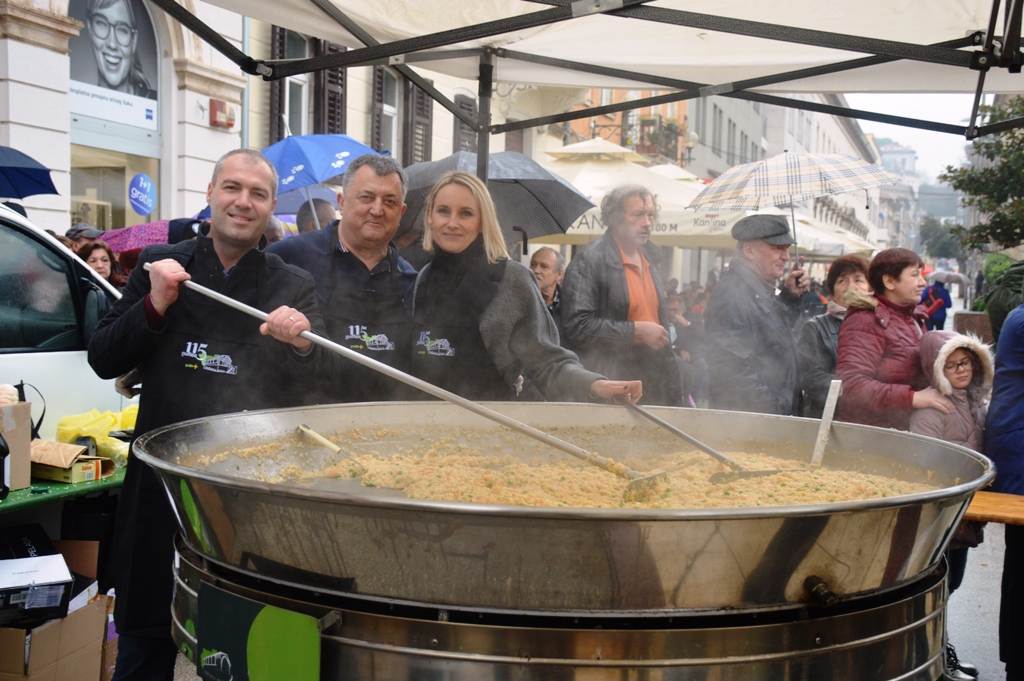
Grad Pula 2018
The Seasplash Platform, which will be held for the thirteenth time, presented an exciting alternative program, which includes Fakofbolan, Atheist Rap, the Vasil Hadzimanov Band with guests. The New Year's party will be held at the Klub Kotač and the distinctive C.U.B.E. vol 7 at Club Uljanik.
Perhaps Pula’s most popular program will continue its tradition this winter, the recognizable Advent at the Cathedral with Vanna and the Humanitarian Christmas Concert at the Istrian National Theater, featuring Marko Tolja and Mia Dimsic, announced program coordinator Daniel Sponza.
Gordana Restovic announced that the people of Pula and their guests would welcome Zabranjeno Pusenje on New Year's Eve with Le Monde, while Nola will take the stage for the early NYE party at noon. The director of the Pula Tourist Board, Sanja Cinkopan Korotaj, added that this entire event contributes to promoting Pula as a tourist destination throughout the month, which citizens and visitors are happy to visit and gladly plan their return.
The mayor of Pula, Boris Miletic, thanked everyone involved in the organization, from city institutions and the private sector to civil society organizations actively engaged in creating the program. He emphasized that the holiday season was a time for socializing and communion and that this program offers an alternative to the unfortunately ubiquitous social lifestyle of today, which is mostly carried out on smartphones. Pula in December is a meeting place for all ages in the city, from young to old.
To read more about travel in Croatia, follow TCN’s dedicated page.
Battle Trip: Most Popular South Korean TV Show Filming in Croatia
October 9, 2019 - Battle Trip, the most popular South Korean TV show, is using Croatia as its home base this week.
HRTurizam reports that the Croatian National Tourist Board and Bluesun Hotels, in cooperation with Korean National Television KBS and A9, hosted the production crew of the most popular South Korean TV show 'Battle Trip', as well as Korea's biggest pop stars Park Cho-rong and Yoon Bo-mi.
The crew is on a six-day visit to Croatian destinations, which will be featured in the popular TV show. Otherwise, the Battle Trip broadcast on the KBS channel is followed by over 25 million viewers in South Korea, as well as a large number of Korean expatriates, predominantly in the US, via KBS World.
Korean pop stars Park Cho-rong and Yoon Bo-mi, who are currently in Croatia, are members of the K-pop group Red Velvet. They are followed on social networks by 8.3 million followers on Instagram and 1.3 million followers on Facebook.
The Battle Trip production will visit Zagreb, Hrvatsko Zagorje, Split, Makarska Riviera, and Brac.
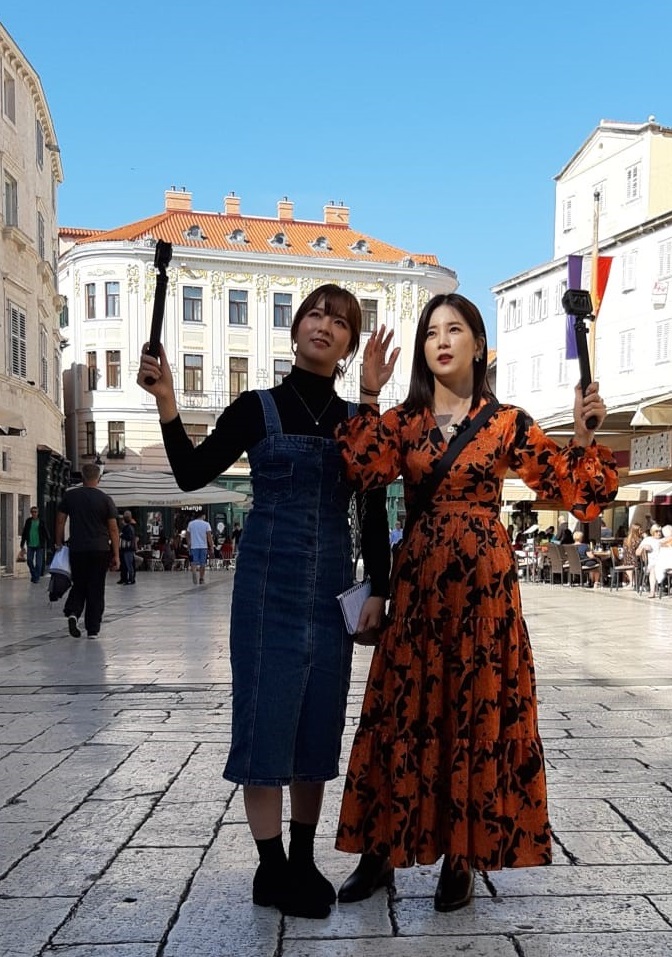
HTZ
During their journey, they will learn about traditional Croatian customs such as making gingerbread hearts in Zagorje, enjoying gastronomic delicacies in Split, but also experiencing an off-road buggy adventure in Baska Voda and cycling around Brac. The show, which is 90 minutes long, will be broadcast in South Korea in about a month.
"Croatian destinations have made their way into excellent locations for top films, series, and shows. The positive impact of world-renowned shows and films on the global promotion of our country is beyond question, which is confirmed by the huge jump in our country's popularity in the Korean market after the Korean reality show 'The Romantic' was filmed in Zagreb in 2013. I am sure that the popularity of Croatia in Korea will increase further after their music stars stay in our country, but also after the most-watched South Korean TV show is broadcast,” said Croatian Tourist Board director Kristjan Stanicic, adding that the recent formal opening of the HTZ Representative Office in Seoul further increased Croatia’s promotional activities in Korea.
South Korea, with 51 million inhabitants and an established direct flight between Zagreb and Seoul by Korean Air, represents a significant market potential for Croatia.
To date this year, Croatia recorded over 317,000 arrivals and 402,000 overnight stays from the Korean market, which represents an increase of almost 5 percent in overnight stays compared to the same period last year.
According to the realized number of overnights, the destinations that record the highest traffic from the Korean market are Zagreb, Dubrovnik, Split, Zadar, and Plitvice Lakes. Korean tourists mostly visit Croatia in the pre and post-season, mainly during May and June and September and October.
To read more about travel in Croatia, follow TCN’s dedicated page.

